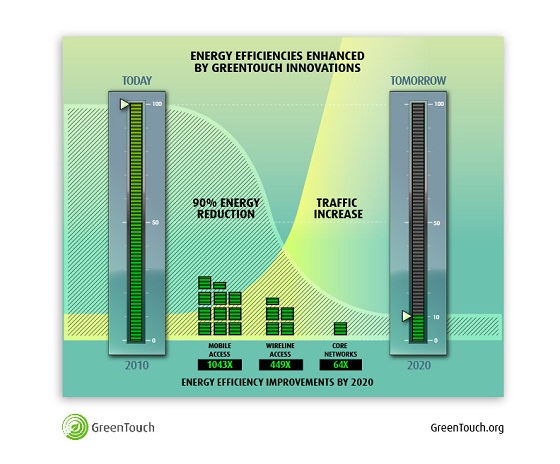Competing with Green: The Power of Power Reduction

Third, reducing energy consumption benefits the planet and society as a whole. The telecommunications industry produces 1 billion metric tons of carbon emission every year, and if that number were to scale with data and traffic growth, the world would be negatively impacted. Ericsson, for instance, has been measuring “emissions per subscriber” as a metric since at least 2007.
Lastly, there are regulatory incentives at play that both reward energy efficiency and penalize excessive carbon emissions. While regulations vary substantially depending on the jurisdiction, the industry itself is adopting specifications that are more universal. In May, the International Telecommunication Union (ITU) and the European Telecommunication Standardization Institute (ETSI) jointly developed a standard that assesses the environmental impact of ICT goods, networks and services and the indirect impact on greenhouse gas emissions in the non-ICT sector. Dr. Hamadoun I. Touré, Secretary General, ITU, said, “Policymakers have demanded a standard, and this is exactly what’s needed to ensure that the assessment and reporting of environmental impacts becomes the norm across the ICT industry. Cooperation between standards bodies is a key factor in ensuring an efficient, coordinated approach.”
Saving green with green
Green ICT solutions offer significant and compelling cost savings. These savings can be realized in central offices, data centers, and access points (base stations, small cells), and can be achieved by the following:
- lowering the power needs of network equipment by transitioning to power-efficient processing
- reducing the real-estate footprint
- employing new cooling technologies; and
- evolving from coal to renewable energy sources.
As we’ve reported in Pipeline, the advent of more power efficient processors is having a dramatic effect on the cost of computing equipment, and not just ARM-based processors. X86 processors from Intel (Atom) and AMD (A-Series APUs) are also highly efficient. This adds up to cheaper clouds, data centers, and network elements.



















